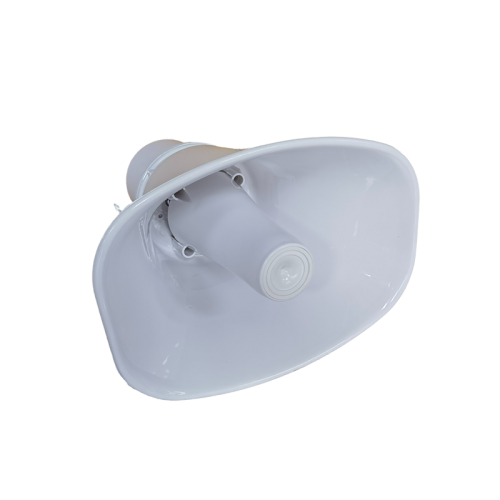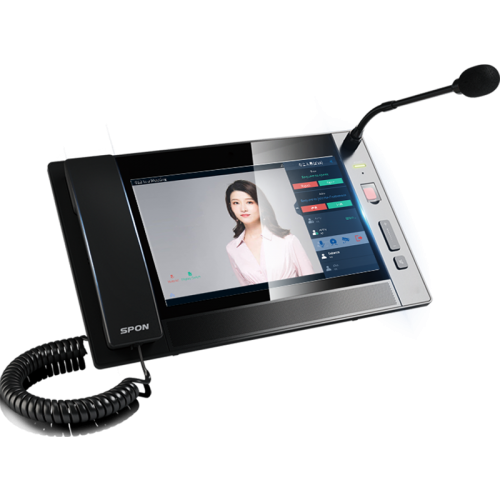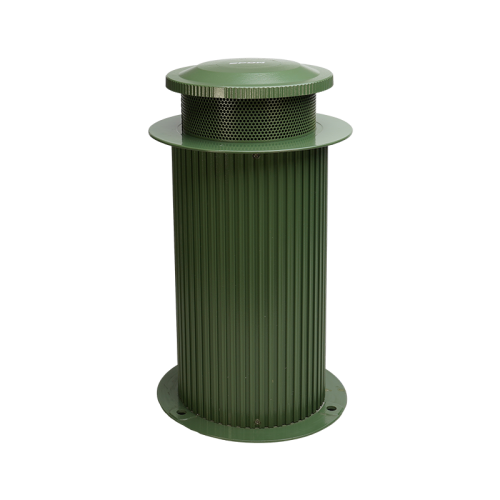Boost Your Communication with an Advanced IP PA System Today
Wiki Article
Comprehensive Guide to Public Address Systems
Public address (PA) systems are generally experienced in numerous jobs such as office buildings, property complexes, business office complex, schools, hospitals, train stations, airport terminals, bus factories, terminals, and financial institutions. This guide will provide a comprehensive introduction of PA systems.Parts of a PA System
No matter of the type of PA system, it typically contains 4 almosts all: source tools, signal amplification and processing equipment, transmission lines, and speaker systems.Resource Equipment
Music Athletes: Made use of for history songs. Microphones: Includes conventional microphones and zone-select microphones. Voice Storage Instruments: For keeping company and emergency situation program messages.
Signal Processing and Boosting Devices
Audio Signal Processor: Deals with audio signal compensation, attenuation, equalization, and so on. Pre-Amplifier: Pre-amplifies sound signals. Power Amplifier: Amplifies audio signals to drive audio speakers, giving continuous voltage output.
Transmission Lines
The solution monitoring platform software application allows the surveillance center to apply central governance over the broadcast and intercom communication systems. It facilitates online tool standing monitoring, fault medical diagnosis, and troubleshooting, solidifying system stability and uniformity.
Audio Speakers
Ceiling Audio Speakers: Indoor, flush-mounted in the ceiling, constant voltage or continuous resistance. Wall-Mounted Audio speakers: Wall-mounted, consistent voltage or consistent resistance. Column Audio Speakers: Free-standing, ideal for exterior or interior use. Horn Audio speakers: High level of sensitivity, suitable for exterior or indoor usage. Concealed Speakers: For exterior settings like parks or yards, created to appear like mushrooms, rocks, or stumps.
Audio Technical Specs of PA Equipments
In daily settings, common sound stress degrees are:. Workplace sound: 50-60 dB. Typical conversation: 65-70 dB. Fabric manufacturing facility sound: 110-120 dB. Tiny quality shooting: 130-140 dB. Big jet airplane sound: 150-160 dBSignal-to-Noise Ratio (SNR)
SNR determines the proportion of the signal voltage to sound voltage, revealed in decibels. A higher SNR suggests less sound and far better audio top quality. Generally, SNR ought to go to the very least 63 dB, with high-fidelity speakers reaching over 110 dB.
Input Level Of Sensitivity
This is the minimum input voltage required to accomplish the rated outcome power. Greater level of sensitivity means much less input signal is needed. Generally, power amplifiers have an input level of sensitivity of 0.775 V (0 dB) to 1.5 V (+6 dB)
Optimum Result Power (Audio Speakers)
The optimum power an audio speaker can take care of in other words ruptureds without damage.
Rated Power (Speakers)
The constant power a speaker can handle without distortion, determined in watts (W) Ranked power is an average value, and speakers can take care of peak power approximately 2-3 times the rated power.

Continuous Voltage (70V or 100V) Utilizes voltage to drive audio speakers, allowing longer transmission ranges and several audio speakers in parallel. Sound high quality is a little substandard compared to consistent impedance systems. Power amplifiers have to match the voltage ranking of the speakers to avoid damages.
Continuous Resistance. Makes use of current to drive audio speakers, supplying better audio quality yet minimal transmission range (up to 100 meters) Resistance matching is important; for instance, an 8Ω amplifier must be matched with 8Ω audio speakers.
Picking and Configuring Speakers
Speaker OptionIndoor Spaces with Ceiling: Use flush-mounted ceiling speakers without a rear cover. Indoor Spaces with Just a Framework: Use ceiling audio speakers with back covers or hanging ball-type speakers. Outside Locations: Usage weatherproof column audio speakers or horn audio speakers. Parks and Gardens: Use concealed speakers created for visual functions. High-End Interiors: Usage elegant hanging audio speakers. Fire-Safe Areas: Use fireproof audio speakers with sealed styles.
Audio Speaker Configuration
Speakers must be dispersed evenly across the service location to ensure a signal-to-noise ratio of a minimum of 15 dB. Common history noise levels and suggested audio speaker positioning are:. High-end office passages: 48-52 dB. Big shopping center: 58-63 dB. Busy street areas: 70-75 dB. Audio speakers need to be placed to guarantee a sound stress degree of 80-85 dB in the majority of environments. Ceiling speakers need to be spaced 5-8 meters apart, or 8-12 meters for history music just. For emergency broadcasts, make sure that no location is greater than 15 meters from the nearby speaker.
Amplifier Sizing
Estimation Technique:
For service and organization PA systems: P= K1 × K2 × ΣPo where:. P = Complete amplifier output power (W) K1= Line loss settlement element. K2 = Aging element (1.2-1.4) ΣPo = Overall power requirement. For emergency alarm systems, use 1.5 times the overall variety of audio speakers.
Example Calculation:
For a background music system with 10 speakers at 20W each: P= 1.26 × 1.2 × 10 × 20W × 0.7= 211W. Final amplifier capacity must be 1.3 times this worth: 211W × 1.3= 274W
Installation Needs
Speaker PlacementAudio speakers should be uniformly and tactically distributed to satisfy coverage and sound top quality demands.
Power Supply
Little PA systems can use normal power outlets, while systems over 500W need a committed power supply. Power should be steady, with automatic voltage regulators if necessary. The power supply need to be 1.5-2 times the tools's power usage.
Cable and Avenue Setup
Use copper-core cables for signal transmission. Cable televisions ought to be protected and transmitted with appropriate channels, avoiding disturbance from electrical lines. Make certain proper separation between power and signal lines.
Lightning Defense and Grounding
PA systems require proper grounding to avoid damage from lightning and electric interference. Use devoted basing SPON Communications for tools and make sure all basing steps fulfill security criteria.
Setup High Quality
Cable Television and Adapter Top QualityUsage premium wires and connectors. Ensure links are secure and properly matched to avoid signal loss or interference.

Keep correct phase placement between speakers. Usage dependable methods for connecting cords, such as terminal or soldering blocks, and shield connections from ecological damages.
Grounding and Security Checks
Verify all grounding is correctly set up and inspect the safety and security of power connections and equipment settings. Do extensive inspections before wrapping up the installation.
Evaluating and Adjustment
Test the entire system to ensure all parts function properly and satisfy layout specifications. Change setups as required for optimum performance.
Craftsmanship Requirements for Public Address Systems
Construction Top Quality Needs
The quality of building and construction in a public address (PA) system task is important to meeting design requirements and user demands. Consequently, it is important to strictly follow the style plans, abide by standards, avoid rework and delays, and keep in-depth building logs. Secret areas to concentrate on consist of:
Cable Selection and Installment
Throughout the construction of a PA system, attention is commonly concentrated on equipment, yet the selection of transmission cables is additionally vital for accomplishing acceptable sound quality. Premium broadcasting tools (amplifiers, audio speakers, and so on) is required, but the high quality of the transmission wires likewise affects sound quality.
Parallel speaker cords have inherent capacitance in between the cords, which is not ideal for long-distance transmission as it can undermine high regularities and create vague or stifled high noises. Twisted pair wires can properly conquer this problem and ought to be utilized for long-distance transmission.
Secured twisted pair cords avoid electromagnetic disturbance and improve wire resilience, making them appropriate for long-distance installations. The size of the cable televisions additionally affects efficiency. Thicker cable televisions reduce transmission loss yet boost expense and installation problem. The selection of wires need to balance efficiency and price, adhering to these requirements:. Use well balanced links for all signal links in between system tools, with soldered endpoints. For systems with emergency alarm functions, utilize flame-retardant or fire-resistant copper-core wires. Cords should be transmitted with steel conduits or cord trays, and ought to not share trays with lighting or power lines. The bending span of cable televisions need to be no less than 15 times the cable television diameter, and power wires ought to be divided from signal and control wires.
Attaching Audio Speakers and Program Lines
When attaching audio tools, it's vital to make certain phase uniformity in between audio speakers and broadcast lines. Phase disturbance in between audio speakers can cause significant variations in audio stress degrees, leading to uneven sound distribution. Stick purely to wiring tags and standardized connection methods.
Three common connection techniques in PA systems are:. Twisting Technique: Stripping insulation from cords, twisting them together, and securing them with tape or clamps. This method is easy but may deteriorate in time. Screw Terminal Technique: Stripping insulation and inserting wires into screw terminals, then tightening up the screws. This approach is generally made use of. Soldering Approach: Removing insulation, turning cables, and soldering them together, then covering with tape. This approach is extra appropriate and trustworthy for high-demand or damp atmospheres.
Regardless of the method, usage tinned cord to assist in soldering and stop rust. Use PVC or steel channel to safeguard exposed cords from joint boxes to speakers.
System Grounding
The control area must have both safety and operational grounding. To minimize disturbance from the power system, different protective and functional groundings ought to be established. Advised method is to install separate copper strips for solid and weak electric systems in their respective vertical shafts. This guarantees ideal operation of the weak electric system. The overall grounding resistance must not exceed 1Ω.
Building And Construction Assessment
Due to the intricacy of PA systems with many connections and elements, comprehensive inspection is needed. General inspections must include:
Security checks of tools setup. Confirmation of power line setups. Precision of connections and discontinuations.
Unique focus ought to be provided to device settings, such as insusceptibility matching switches on speakers. Validate that switches are set properly to stay clear of damage. Check the outcome option switches on signal source gadgets, setups on signal handling tools, amplifier bridging switches, and power supply settings. When these actions are validated, prepare for equipment debugging. Considering that debugging approaches differ based upon specific project needs, they are not covered in detail here.
High Quality Records
Certificates, technical requirements, and paperwork for audio speakers, units, transformers, controllers, electrical outlets, amplifiers, sound processing devices, protected cable televisions, etc
Pre-installation, concealed evaluation, self-inspection, and mutual assessment records.
Records of design modifications and final drawings (IP Speaker). Quality assessment and analysis documents for avenue and wire installment
Records of system installation and debugging.
Major Installation Needs
Tools Installment OrderPlace regularly utilized tools like the major program controller at the top for easy accessibility. For even more complex systems with a 2.0-meter closet, setting frequently made use of devices in between 0.8 to 1.5 meters for comfort.
Tools Link Order
The mixer outputs are distributed to each amplifier, and if making use of pure power amplifiers, link to the INPUT audio input. Amplifier outcomes then attach to addressable terminals, area control boxes, or zone selectors, and lastly to the audio speakers.
Electrical Wiring Factors To Consider

Power Supply
Utilize a specialized power sequencer for systems to ensure uniform power administration and consistent tool startup sequences. The primary power supply need to consist of a ground line to protect devices and stop static-related threats.
Devices Option
Do not count only on look; consider customer reviews and market credibility. Products from reliable suppliers with extensive screening and experience are generally more reputable.
Wireless Microphones
For wireless microphones, select UHF versions for better range and signal stability. Alternatives include one-to-one, one-to-two, one-to-four, or one-to-eight configurations (IP Paging System). For mobile usage, prefer headset microphones. Lavalier microphones may have poorer sound high quality and are vulnerable to responses.
Link Wires
Usage strong links for longevity and prevent depending on adapters, which can create loosened connections with time. Appropriately solder connections to make sure toughness and ease of maintenance.
Closet Installment
If making use of deep power amplifiers, make certain the cupboard measurements (e.g., 600x600mm) work with the equipment. Measure cupboard depth and spacing before installation.
Appropriate planning, top quality equipment, and meticulous installment and upkeep are crucial to achieving optimal sound high quality and trustworthy efficiency in a PA system.
Usually, SNR needs to be at the very least 63 dB, with high-fidelity audio speakers getting to over 110 dB.
Audio speakers need to be placed to make sure a sound stress level of 80-85 dB in many settings.When connecting audio equipment, it's vital to guarantee phase consistency in between audio speakers and program lines. Stage interference in between speakers can cause substantial variants in audio pressure levels, leading to uneven sound circulation. Amplifier results then link to addressable terminals, zone control boxes, or zone selectors, and lastly to the audio speakers.
Report this wiki page